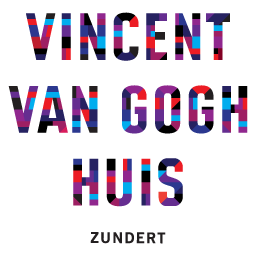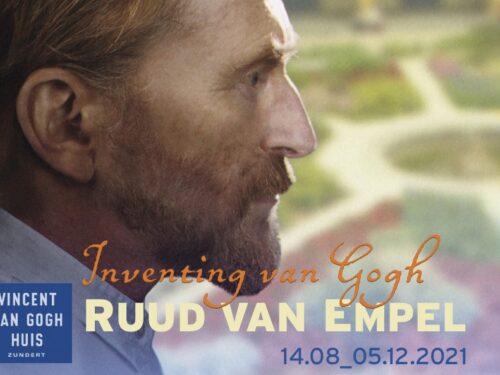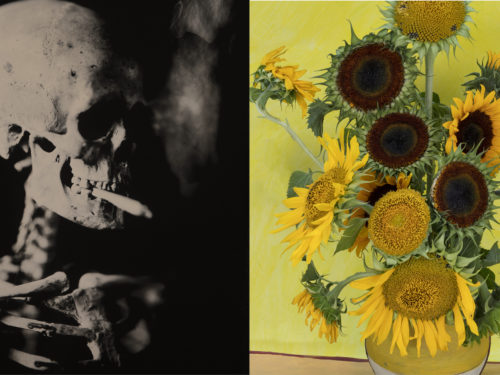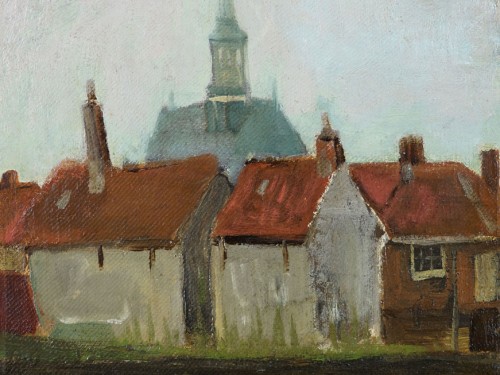
From 30 July to 30 October 2022, the Vincent van Gogh House presents the exhibition ‘Closer to Vincent – Everyday Objects in the Work of Vincent van Gogh’. The exhibition is based on new research by art historian Alexandra van Dongen into the objects that Van Gogh has depicted in his paintings. Her study has provided many new insights into Vincent’s work. The exhibition is designed by the artists André Smits & Monika Dahlberg and contains various objects from Van Gogh’s estate, from the collections of the Van Gogh Museum Amsterdam and Musée d’Orsay Paris.
Vincent van Gogh frequently depicted everyday objects in his drawings and paintings from the start of his artistic life up to and including the last year of his life in France. They figure in his earliest work in his interiors with people engaged in domestic work or figures sitting on chairs by the fireplace. Later also in his (flower) still lifes, which he mainly regarded as studies of color and form. They often arose due to a lack of money to afford living models. Some of his material attributes, everyday objects used by Vincent as a flower vase, such as a French earthenware liquor jug and a Norman copper milk jug, have ended up in the collection of the Van Gogh Museum in Amsterdam thanks to Vincent’s sister-in-law Jo van Gogh-Bonger.
Never before have all the everyday objects depicted by Vincent been accurately identified. Recent research by art historian Alexandra van Dongen, curator of historical design at Museum Boijmans Van Beuningen, shows that a precise identification of Vincent’s objects can sometimes shed new light on the possible place of manufacture and the dating of his work. For example, a very simple earthenware saucepan (casserole) that appears on Still life with potatoes comes from the southern French pottery center Vallauris. It was previously assumed that Vincent painted this still life in Nuenen, but identification of the saucepan as well as technical research into the linen canvas shows that Paris 1886 was the place and time of its manufacture. Before leaving for France, Vincent started a series of still lifes in Nuenen in his studio in the mangle room behind his parental home. The depicted utensils give a good idea of the Brabant and other kitchen utensils of that time. The presence of such objects in Vincent’s mother’s kitchen has been confirmed by recent archaeological finds in the rectory’s backyard. Vincent sometimes borrowed antique or special objects from the collector and amateur painter Antoon Hermans, to whom he gave painting lessons. The identification of several antique objects, such as a sixteenth-century stoneware bearded man’s jug, point to the provenance of this Eindhoven collector.The sketches of The Potato Eaters clearly show which objects Vincent chose and studied for his composition. For the exhibition, the Netherlands Open Air Museum is making available a similar example of the characteristic kerosene lamp that hangs above the table, as well as in the interiors of Nuenen weavers. Wooden chairs are also often used in Vincent’s work. They are even the main subject of two paintings that he considered to be portraits of Gauguin and himself when they briefly worked together in the Yellow House in Arles. Many of his famous French flower still lifes show ‘vases’ that were not originally intended as flower vases. Vincent placed his bouquets in various stoneware beer tankards, majolica pitchers and apothecary jars, copper milk jugs, faience ewers and earthenware storage jars, which were intended for the storage of ‘confit de canard’. The presence of certain types of objects in Vincent’s work often says something about the place and location where he painted them or refers to his artistic sources of inspiration. Because Vincent portrayed his material models in a very naturalistic way, they are often very easy to identify. Alexandra van Dongen focuses our eyes on small details, on objects that we usually don’t pay attention to, but which are very meaningful to understand Van Gogh’s work even better.
Exhibition & publication
The exhibition in the Vincent van Gogh House takes place on the occasion of the publication of Alexandra van Dongen’s research at Uitgeverij Sterck & De Vreese. Earlier in 2021, Van Dongen spent a month at the sexton’s house in Zundert as ‘artist in residence’ to continue her research and she already presented some of her findings about the Brabant objects in Van Gogh’s work in the small exhibition ‘You can’t get any closer’, based on the archaeological finds from the backyard of the rectory in Nuenen, with which it became clear on the basis of which objects Vincent translated his mother’s kitchen utensils into paint. Together with visual artists André Smits (Artist in the World) and Monika Dahlberg, who will be doing an artist residency in Zundert in July and August 2022, Van Dongen is now translating her research into an exhibition with texts, drawings and collages on the walls and a selection of objects, making the paintings and locations where Van Gogh worked visible. Central to the exhibition are objects from Vincent van Gogh’s estate, which are on loan from the Van Gogh Museum Amsterdam and Musée d’Orsay Paris. Archaeological finds from the garden of the rectory in Nuenen are also on display. Furthermore, various other objects are presented that are related to the type of objects in Van Gogh’s work, such as a ‘confit de canard’ pot of the same type that he used in his still lifes with sunflowers and a replica of the willow chair that Vincent had made in Arles and on which his models, such as the postman Joseph Roulin, posed. This replica is specially made for the exhibition in the Van Gogh Huouse by the Zundert chair maker Rien Stuijts.
Made possible by: Mondriaan Fonds & Prins Bernhard Cultuurfonds
Read also: Adventures with Van Gogh



